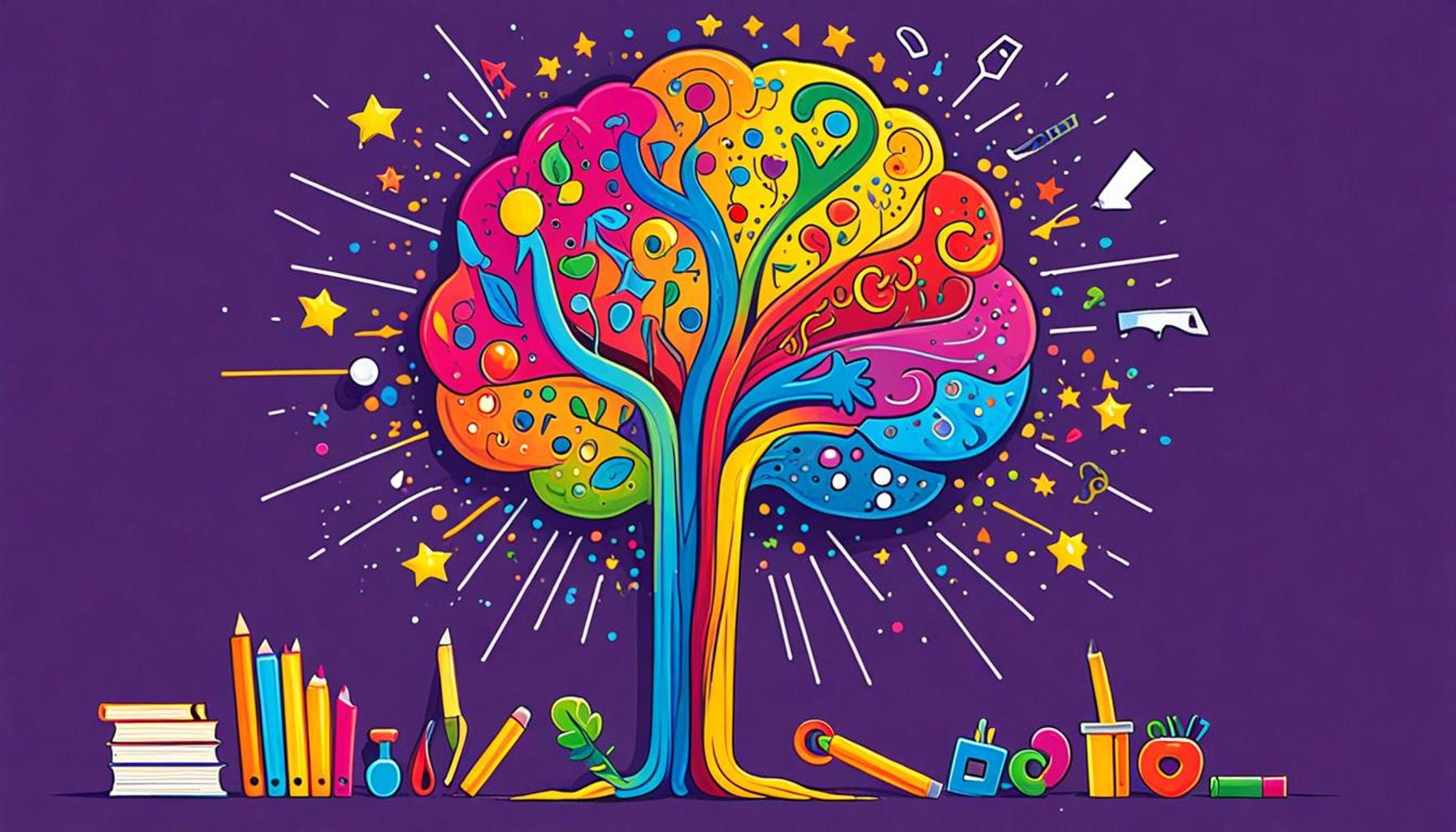The Role of Constructive Feedback in Learning Strategies and the Promotion of a Growth Mindset

Understanding Constructive Feedback
In today’s rapidly evolving educational landscape, constructive feedback plays a pivotal role in shaping learning strategies. It helps students to identify their strengths and areas for improvement, fostering a culture of continuous growth. For many learners in Nigeria, where access to diverse educational resources may vary, harnessing feedback effectively can make a significant difference.
Benefits of Constructive Feedback
Constructive feedback is not just about evaluation; it encompasses various elements that enhance learning experiences, such as:
- Encouraging self-reflection: Learners can engage in self-assessment, gaining insights into their own capabilities and recognizing personal development areas. For instance, students in classrooms in Lagos might be prompted to reflect on their performance in recent tests, identifying specific topics where they struggled.
- Motivating improvement: Positive reinforcement fosters an environment where students feel inspired to participate actively. A teacher appreciating a student’s effort in group discussions can encourage others to speak up in future classes, thereby enhancing their confidence.
- Building resilience: Constructive feedback equips learners to embrace challenges, enabling them to view mistakes not as failures but as vital lessons for growth. An example can be drawn from a Nigerian higher institution where students are encouraged to share their project failures and subsequent learnings, creating a supportive atmosphere of shared growth.
The Growth Mindset Connection
The concept of a growth mindset—the belief that abilities can be developed through dedication and hard work—goes hand in hand with constructive feedback. By cultivating this mindset, students are more likely to embrace ongoing learning and see challenges as stepping stones. In Nigeria, educators and parents can promote this mindset through consistent and meaningful feedback. For example, a parent discussing their child’s struggles in mathematics can focus on the effort put in rather than just the grades achieved, thus instilling a sense of persistence and improvement.
Engaging with Feedback
To foster a robust learning environment, it is crucial to understand how feedback can be effectively integrated into learning strategies. This can be done through systematic feedback loops between teachers and students, with regular check-ins that allow for adjustments in learning approaches. Exploring stories of success from local schools can provide invaluable insights for learners and educators alike. For instance, some schools in northern Nigeria have implemented peer feedback systems, where students critique one another’s work, leading to increased collaboration and shared understanding.
Additionally, technology can serve as an aid in enhancing feedback mechanisms. Online platforms can provide timely feedback through quizzes and assignments, enriching the learning experience further. In doing so, the power of constructive feedback becomes evident, illuminating pathways for personal and academic growth. Embracing this strategy can help students in Nigeria not just to achieve academically but also to thrive as well-rounded individuals ready to face the challenges of the future.

SEE ALSO: Click here to read another article
Leveraging Constructive Feedback for Effective Learning
Constructive feedback, when utilized effectively, can transform traditional learning experiences into dynamic opportunities for growth. In the context of Nigeria’s diverse educational environments, understanding the application of feedback is crucial. Teachers and educators need to embrace feedback not merely as a form of assessment but as a vital tool for fostering a supportive culture of improvement. Delving into the various aspects of constructive feedback can illuminate how it fosters analytical skills, critical thinking, and resilience among students.
Types of Constructive Feedback
Constructive feedback can take many forms, each serving a different purpose in the learning process. Some of these include:
- Formative Feedback: This ongoing feedback focuses on the learning process rather than the end product. It can be delivered during class activities, enabling students to adjust their approaches in real time and cultivate a deeper understanding of the material.
- Summative Feedback: Typically provided at the end of a unit or semester, this feedback reviews overall performance. While useful, it is essential that summative feedback is coupled with actionable suggestions for how students can improve in future endeavors.
- Peer Feedback: Encouraging students to critique one another’s work fosters collaboration and mutual growth. This method not only enhances comprehension through discussion but also builds relationships among peers, contributing to a positive learning environment.
The Imperative of Clear Communication
The effectiveness of feedback is heavily reliant on clarity. Educators have a responsibility to articulate their observations in a manner that is both constructive and comprehensible. For example, a teacher at a secondary school in Abuja might employ analogies or relatable scenarios to explain where a student needs improvement in their writing skills. This clarity ensures that students understand the feedback, making it easier for them to implement the necessary changes.
Moreover, timely feedback ensures that learners can make adjustments before progressing, thereby reinforcing the learning objectives. Teachers can capitalize on technology to provide real-time feedback through educational platforms, thus allowing students to receive guidance when they need it the most. This integration can especially benefit students across Nigeria, from the bustling cities to rural schools, by providing equal access to feedback mechanisms.
Creating a Feedback-Friendly Environment
For constructive feedback to thrive, it must be embedded within a culture that values learning from mistakes. In a classroom setting, when educators encourage questions and discussions about errors, they signal to students that challenges are part of the learning journey. A notable example can be mirrored in schools in the Jos area, where teachers incorporate feedback sessions into their routines, creating an atmosphere of openness and inquiry.
In conclusion, the awareness of the different types of feedback, effective communication, and the establishment of a supportive environment are foundational elements that enhance learning strategies through constructive feedback. By embracing these principles, educators across Nigeria can significantly contribute to nurturing a growth mindset among students, fostering their ability to overcome obstacles and pursue lifelong learning.
The Role of Constructive Feedback in Learning Strategies
Constructive feedback plays a pivotal role in reinforcing learning strategies, establishing pathways for personal and academic growth. It serves as a tool that enables learners to recognize their strengths and identify areas that need improvement. When given effectively, constructive feedback acts as a catalyst, encouraging students to embrace challenges and see failures as opportunities for learning rather than as drawbacks to their abilities.A well-structured approach to feedback can transform a standard classroom environment into a dynamic learning space. For instance, offering feedback that focuses on specific actions rather than general attributes allows students to alter their strategies based on actionable insights. This very approach fosters a growth mindset, a term coined by psychologist Carol Dweck, which involves the belief that one’s abilities and intelligence can be developed through dedication and hard work.Implementing regular feedback sessions enhances students’ self-efficacy, as they begin to associate their efforts with tangible results. This connection promotes resilience, ensuring that students are more likely to take risks and step outside their comfort zones. The process also encourages ongoing dialogue between educators and learners, fostering a supportive learning environment where questions and curiosity thrive.Moreover, constructive feedback can be tailored to individual learning styles, which further enhances its efficacy. For instance, visual learners may benefit from graphic proof or visual maps detailing their progress and areas needing attention, while auditory learners might absorb feedback through verbal discussions. This personalization of feedback creates a richer educational experience that caters to diverse learners.
Benefits of Constructive Feedback
The benefits of constructive feedback extend beyond academic achievements to personal development. It nurtures critical thinking skills as students assess their performance and contemplate the feedback received, enabling them to formulate strategies for improvement. Additionally, it teaches important life skills such as adaptability and perseverance. Learners become adept at analyzing their experiences and adjusting their approaches accordingly, essential traits in an ever-changing world.To support these benefits, educators can incorporate peer feedback mechanisms, allowing students to engage with one another and validate each other’s experiences. Collaborative feedback not only enhances social skills but also instills a sense of community within the learning sphere. Ultimately, creating a culture of feedback transforms the learning environment, paving the way for students to thrive through improved learning strategies and a fortified growth mindset.
| Category | Key Features |
|---|---|
| Feedback Timing | Prompt and timely feedback enhances learning transfer and application. |
| Personalization | Tailoring feedback to individual learning styles promotes deeper understanding. |
| Constructive Nature | Focus on strengths and areas of improvement fosters a positive growth mindset. |
| Peer Involvement | Encourages camaraderie and collaborative learning, enhancing overall engagement. |
RECOMMENDED: Check out this similar article
Fostering Growth Mindset through Constructive Feedback
In an educational landscape where resilience and adaptability are paramount, constructive feedback plays a pivotal role in promoting a growth mindset. This psychological framework, where students believe they can improve through effort and learning, is crucial for navigating the challenges inherent in academic pursuits. Feedback that emphasizes progress rather than inherent ability empowers learners, instilling the understanding that intelligence and skills can be developed over time.
The Psychological Impact of Feedback
Research indicates that the manner in which feedback is delivered can significantly influence students’ self-perceptions and motivation levels. For instance, a study conducted within Nigerian secondary schools showed that students who received praise for their effort and strategies—rather than their inherent talent—showed a marked improvement in problem-solving tasks. This highlights the importance of communicating feedback that is aimed at fostering perseverance rather than mere performance accolades.
In practical terms, teachers can apply this understanding by giving feedback that highlights areas of struggle along with concrete strategies for improvement. For example, if a student in a mathematics class in Lagos is having difficulty with algebra, the educator might emphasize the effort the student put in during practice sessions while also suggesting specific resources, such as online tutorials or targeted exercises to refine their skills.
Encouraging Self-Reflection Through Feedback
Constructive feedback should also encourage self-reflection, prompting students to assess their learning processes. Encouraging learners to question what strategies worked or failed enables them to take ownership of their learning and adapt their approaches in future situations. This self-assessment fosters independence and critical thinking, as evidenced by initiatives in Calabar’s schools where teachers implement reflective journals. Here, students document their learning journeys, evaluating feedback and setting new learning goals, which further entrenches a growth mindset.
The Role of Technology in Enhancing Feedback Mechanisms
In today’s digital age, technology can enhance constructive feedback mechanisms by providing timely, personalized, and accessible feedback opportunities. Platforms like Google Classroom, for example, allow teachers to leave comments on assignments quickly, catering to the needs of students in both urban and rural areas. This immediate feedback loop helps to address misconceptions rapidly, nurturing a culture of continuous improvement and resilience among students.
Moreover, technology also supports gamified learning experiences, which can integrate feedback as part of the game mechanics. As students navigate these educational games, they receive instant feedback on their performance, creating an environment where trial and error is not only accepted but encouraged as a pathway to mastery.
Parental Involvement in Feedback Engagement
Another avenue to enhance the positive impact of constructive feedback is involving parents in the feedback process. By keeping parents informed about their child’s progress and areas needing improvement, educators can create a robust support system that aligns home and school efforts. Workshops for parents can be organized in places like Enugu to educate them on how to provide effective feedback at home, further reinforcing the growth mindset culture that schools strive to cultivate.
This collaboration between schools and families aids in establishing a consistent message that achievement stems from effort and learning rather than fixed traits. When students witness their parents valuing feedback and encouraging continuous improvement, it reinforces their own journey towards embracing a growth mindset.
YOU MAY ALSO LIKE: Read read another article
Conclusion: The Transformative Power of Constructive Feedback
In conclusion, constructive feedback emerges as a fundamental pillar in the educational journey, shaping not only the learning strategies employed by students but also fostering a robust growth mindset essential for their overall development. The emphasis on effort, resilience, and adaptability in the feedback process cultivates a culture where students are motivated to embrace challenges, learn from failures, and continuously improve.
The profound psychological impact of feedback, coupled with the empowerment of self-reflection, enables learners to take charge of their educational experiences, transforming them from passive recipients into active participants. This transformation is further amplified by the integration of technology, which provides timely and personalized feedback that resonates with today’s learners. By leveraging digital tools, educators can bridge gaps in understanding and enhance the learning experience, making education more engaging and effective for all students, regardless of their backgrounds.
Moreover, involving parents in the feedback loop establishes a unified front that reinforces the importance of effort and growth, thus further embedding the principles of a growth mindset within the home. Such collaborative efforts demonstrate that achievement is not solely attributed to innate ability but rather to perseverance and strategic thinking.
As Nigerian educators and families continue to prioritize constructive feedback, it is imperative to recognize its role in shaping future generations. By championing a culture of constructive feedback, we are not only equipping students with vital skills for academic success but also nurturing a generation poised to tackle the complex challenges of an ever-evolving world. Thus, the journey of learning transforms into an exciting expedition of growth, resilience, and endless possibilities.



